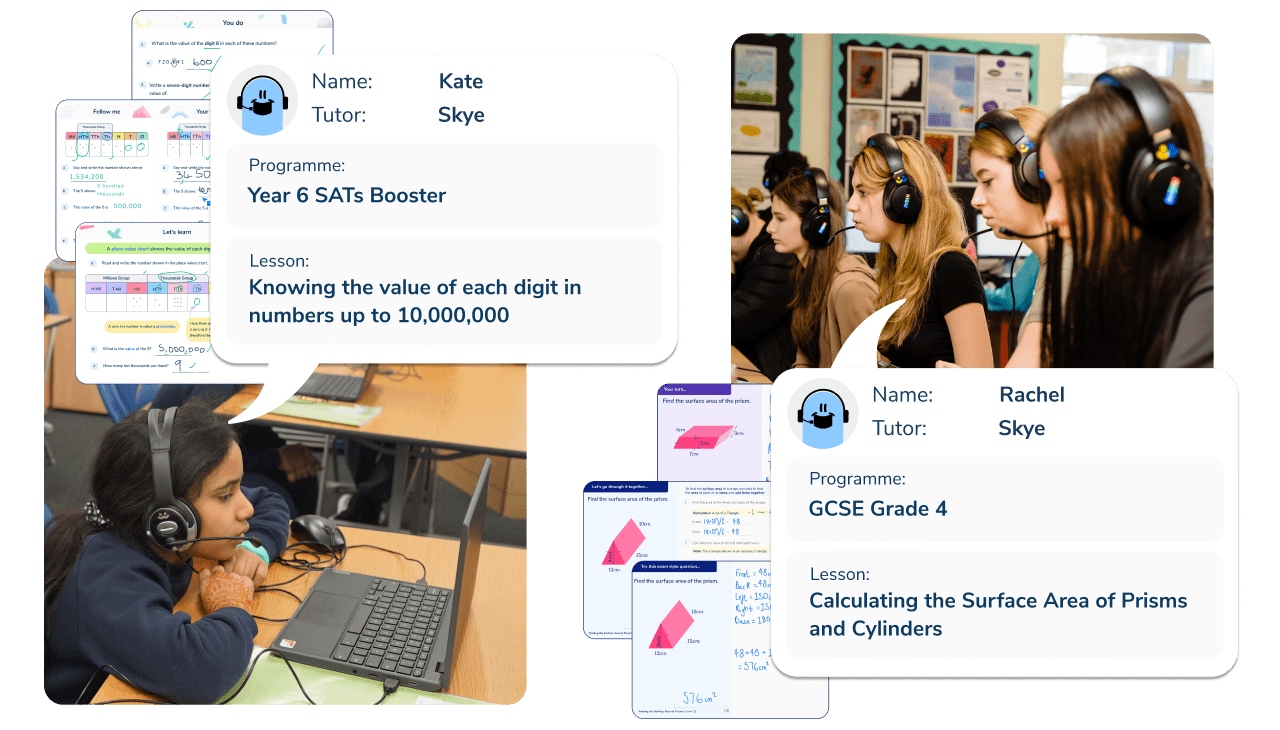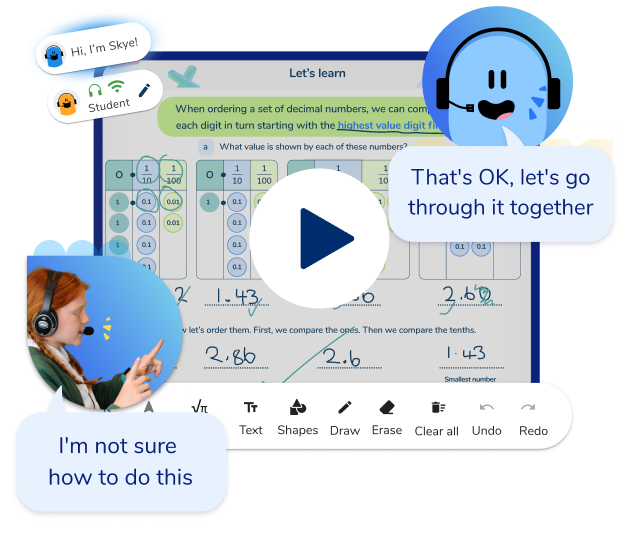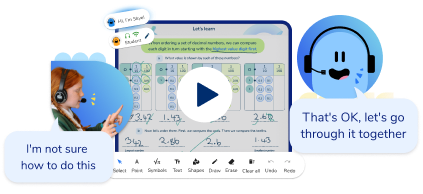Ofsted Safeguarding Inspections: What You Need To Know To Make It A Stress-Free Visit [2025 Update]
Ofsted safeguarding inspections shouldn’t involve processes schools and leaders specifically ‘do’ for Ofsted. But there are everyday processes and procedures that you can implement to prepare for an Ofsted safeguarding inspection.
This article will focus primarily on Ofsted and safeguarding and how you as a senior leader, headteacher or DSL can prepare to make it a stress-free, positive experience.
Whether you are new to education or a veteran, there is no feeling like getting ‘the call’!
Ofsted or the Office for Standards in Education (England’s regulatory body) is never far from news feeds and the minds of headteachers anxiously awaiting their next school inspection.
Having worked as a Designated Safeguarding Lead and recently undergone inspections, in England and a British Inspection Overseas, it’s clear that preparation is key to a successful visit.
Above all, school leaders need to strike a balance between preparing for the Ofsted inspection and calming colleagues’ nerves and promoting the positives that come with school inspections.
What is Ofsted safeguarding?
Ofsted safeguarding questions are a focus for inspectors. They look to ensure that as a school, there is a positive culture of safeguarding and that pupils’ interests are put first. As the welfare of children, child protection and safeguarding should always be at the forefront of whole school practices, Ofsted inspecting safeguarding so closely should never be a shock.
They won’t expect anything beyond the Keeping Children Safe in Education (KCSIE) guidance which is a vital tool for schools.
- What is Ofsted safeguarding?
- What you’ll find in KCSIE and what you need to know about it
- Role of the DSL in safeguarding
- Responsibilities of all staff in safeguarding
- Principles of early help in safeguarding
- What is the Single Central Record?
- How safeguarding is inspected by Ofsted inspectors in your school
- Impact of safeguarding across the curriculum
- Who’s involved in an Ofsted safeguarding inspection?
- How you can prepare for an Ofsted safeguarding inspection
- Ofsted safeguarding questions and answers
- What can happen if safeguarding concerns are identified by Ofsted?
- Ofsted safeguarding and child protection
- Ofsted safeguarding and Local Authorities
- Ofsted Safeguarding Framework
- What you’ll find in KCSIE and what you need to know about it
- Role of the DSL in safeguarding
- Responsibilities of all staff in safeguarding
- Principles of early help in safeguarding
- What is the Single Central Record?
- How safeguarding is inspected by Ofsted inspectors in your school
- Impact of safeguarding across the curriculum
- Who’s involved in an Ofsted safeguarding inspection?
- How you can prepare for an Ofsted safeguarding inspection
- Ofsted safeguarding questions and answers
- What can happen if safeguarding concerns are identified by Ofsted?
- Ofsted safeguarding and child protection
- Ofsted safeguarding and Local Authorities
Ofsted Safeguarding Framework
The new Ofsted framework 2019 sets out the key aspects of what the school inspection will focus on for safeguarding. It is an informative tool to help headteachers and DSLs get a feel of what the focus on school safeguarding will entail during a school inspection.
What do Ofsted look for? The framework covers how Ofsted inspectors will evaluate:
- Safeguarding culture
- What Ofsted expect in terms of interacting with learners
- What constitutes ineffective safeguarding
- What happens if a disclosure is made to an Ofsted inspector during their visit
- How the school handles evidence or allegations of abuse
Key safeguarding information within the education inspection framework is as follows:
- The culture of safeguarding and how schools put pupils’ interests first (378 of the education inspection framework)
- Safeguarding is judged under ‘Leadership and Management’ (379 of the education inspection framework)
- Relevant guidance and key statutory documents ( 380 of the education inspection framework)
- How inspectors triangulate information (381 of the education inspection framework)
- How inspectors evaluate the culture of safeguarding (382-387 of the education inspection framework)
- What to expect when inspectors speak to pupils ( 390-391 of the education inspection framework)
- What happens Ofsted identify allegations of abuse during the inspection (393-393 of the education inspection framework)
- What happens if safeguarding is ineffective ( 395 – 396 of the education inspection framework)
Inspectors do not use the four-point Ofsted grade descriptors for safeguarding but will write a judgement within the leadership and management aspect of the inspection report with regards to whether the arrangements for safeguarding pupils are effective.
As the regulating body, the Department for Education (DfE) sets out statutory guidance in Keeping Children Safe in Education found on gov.uk to outline a school’s responsibility to safeguarding children. Working together to safeguard children is paramount and so Ofsted naturally utilises the DfE’s KCSIE publication to underpin their inspection when looking at safeguarding arrangements, safeguarding concerns and safeguarding policy.
Ofsted Deep Dive Preparation Framework
Help your school get ready for the new Ofsted inspections with this framework of the deep dive questions you can expect to be asked.
Download Free Now!What you’ll find in KCSIE and what you need to know about it
DSLs need to understand KCSIE and any recent updates inside out to make an Ofsted visit stress-free! Ofsted inspectors will expect to see effective deployment of the guidance set out within KCSIE.
This document is paramount to ensuring that as a school you are doing everything to promote the welfare of children.
KCSIE guidance sets out what you need to know about:
- Different types of abuse
- How to recognise and identify abuse
- How to handle low-level concerns
- What schools must do to promote the welfare and safety of children,
- Statutory guidance on record keeping
- Pre-employment checks
- Roles and responsibilities of staff
The document is large and sets out more – this is far from an exhaustive list!

Meet Skye, the voice-based AI tutor making maths success possible for every student.
Built by teachers and maths experts, Skye uses the same pedagogy, curriculum and lesson structure as our traditional tutoring.
But, with more flexibility and a lower cost, schools can scale online maths tutoring to support every student who needs it.
Watch Skye in actionRole of the DSL in safeguarding
KCSIE clearly states that every school must have a Designated Safeguarding Lead (DSL). The main role of a DSL is to take lead responsibility for safeguarding and child protection.
DSLs support staff to:
- Carry out their safeguarding duties
- Advise of safeguarding concerns
- Work closely with services such as the local authority and social care towards ensuring the welfare of children
A key part of the DSL’s role is to ensure that staff regularly receive safeguarding updates. Ofsted is interested in how the DSL trains and keeps staff up-to-date.
DSLs are the champions of safeguarding within the school, ensuring policies are up-to-date and executed. But most importantly, it is the role of the DSL to ensure that safeguarding is clearly visible in the school, through the:
- curriculum
- environment
- staff
- pupils
This includes online safety and understanding the monitoring systems that are in place within the school.
Record keeping and determining the sharing of information between agencies is a key aspect of the DSL role. Responsibilities of the DSL include making referrals and ensuring sensitive information such as child protection cases are stored and shared appropriately.
A thorough understanding of KCSIE is paramount to this role. DSLs need to show that incidents are handled appropriately against the KCSIE guidance.
Responsibilities of all staff in safeguarding
All staff have a responsibility to:
- Provide a safe environment for learners
- Identify children for early help
- Raise concerns about a child’s welfare
There is an emphasis on everyone working together to safeguard children. Because of this, all staff must receive safeguarding and child protection training, and be aware of processes for referrals to local authorities for children’s services.
Principles of early help in safeguarding
Both KCSIE and the inspection framework set expectations for identifying early help. It is important when promoting the welfare of children as an intervention, rather than waiting for incidents to occur and taking a more ‘reactive’ approach.
Schools must identify children who may need early help due to being at risk of harm or have been harmed under Ofsted’s requirements. This helps ensure young people get the help they need at the earliest opportunity.
It is best practice to actively work together to safeguard children through a multi-agency collaborative approach.
KCSIE has a comprehensive list of those who may be more vulnerable and require early help. This includes:
- Children and young people in receipt of an EHCP
- Children and young people with poor mental health
- Young carers
What is the Single Central Record?
A single central record helps ensure staff and pupil safety. It stores information about all staff including qualifications, police clearance checks, barred list checks and checks against people who have lived outside of the UK.
It can also be useful to store non-statutory information such as dates of safeguarding training and childcare disqualification regulations.
Creating and maintaining a single central record has been a statutory requirement of KCSIE since 2007 and is a key element of safer recruitment. Ofsted will ask to see this.
A single central record should include:
- All staff employed by the school
- Governors
- All providers including contractors
- Supply teachers and trainee teachers
- Anyone else entering the school for teaching, training or instruction
How Ofsted inspectors inspect safeguarding in your school
Ofsted inspectors are looking to see that your school is safe. Safeguarding falls under the leadership and management area of the report.
Ofsted will cross-reference information in a number of ways:
- Reviewing the single central record
- Meeting the designated safeguarding lead (DSL)
- Surveys
- Questions with staff and learners
Inspectors triangulate the evidence gathered during the inspection and use this to evaluate the effectiveness of safeguarding in your school.
By doing this, they are looking further than statutory requirements and guidance set out in:
- Ofsted safeguarding policy which sets out Ofsted’s approach to safeguarding
- KCSIE Working together to safeguard children (statutory guidance for schools)
- Positive environments where children can flourish – guidance for inspectors
Impact of safeguarding across the curriculum
Based on a recent Ofsted inspection in my school, Ofsted is also looking to see how safeguarding concerns have impacted the curriculum. For example, increasing online risks through online gaming and social media platforms may have led to further lessons around online safety and cyberbullying in PHSE.
They will also be looking to ensure that staff have a ‘professional curiosity’ where the school can show they act when they see change and not just observe and wait – the principles for this underpins Prevent Duty and KCSIE.
Ofsted is looking to evaluate how effective your whole-school approach to safeguarding practice is. This means that to evaluate, they will look further than the evidence the school presents.
What else will Inspectors look at concerning safeguarding for Ofsted?
They will:
- Take into account how the school implements and reviews safeguarding policy
- Check appropriate actions for safeguarding pupils
- Look at data collected from staff, learners and parents
- Meet with staff to understand the review of how local issues in training
- Look at how looked after children and minority groups are catered for
- Examine case studies for dealing with incidents
- Question the referral process and ensure staff know safeguarding procedures
- Listen to pupils’ views and examine how the school acts upon these
Who’s involved in an Ofsted safeguarding inspection?
During the safeguarding inspection, the DSL should prepare to meet discretely with the inspection officers. The headteacher, the SENDCo and governors will also meet with inspectors. They will answer questions about what safeguarding ‘looks like’ within the school setting along with related questions.
Teachers are questioned within group meetings and should prepare to show that they understand:
- What to do in the event of disclosures
- What their responsibility is
- How safeguarding fits into the curriculum
Ofsted inspectors will also want opportunities to speak with learners — another way they triangulate evidence towards the effectiveness of your safeguarding practice.
How you can prepare for an Ofsted safeguarding inspection
Ofsted’s focus is to assess how well you are carrying out statutory safeguarding and child protection responsibilities to promote the welfare of children. It is hard to not feel intimidated by the inspection framework but if you are confident that what you are doing is the best for the children, then you should have little to worry about!
As previously mentioned, safeguarding is an embedded practice and not just a tick box for Ofsted. That said, there are things you can do to remove the stress of the day. Below are 5 things you can to to prepare and alleviate stress:
- Have everything ready: Ofsted usually contacts the school in advance requesting information such as the single central record, pupils under multi-agency plans with open cases with children’s services and examples of concerns shared with the DSL.
- Make sure that you know the current changes to KCSIE – list them if it helps.
- Know your children! Make sure that you know the current number of learners in attendance that are:
- looked after children,
- children in need
- Families and children who receive early help from outside agencies
- Those who have a child protection order
- Understand how safeguarding links into your curriculum and how safeguarding concerns shape your curriculum.
- Ensure that your safeguarding training is clear and succinct so every member of staff knows the expectations.
Consider quizzing your team regularly on safeguarding topics to keep everyone up-to-date and feel more prepared.
Ofsted safeguarding questions and answers
Every Ofsted inspection is different and contextual to the setting. Here are some potential safeguarding questions that Ofsted may ask during your school inspection.
- How does safeguarding shape your curriculum?
This allows you to talk about the safeguarding issues that are current in your community. For example, ensuring that children know how to stay safe online in computing or how exposure to social media and online gaming has led to PHSE lessons of cyberbullying as well as parent workshops run by the school to highlight dangers. - How do you deal with and record incidents?
For this question refer to your own safeguarding policy and electronic systems that are in place for recording concerns.
It is important to talk through how a member of staff would raise a concern and follow it through to how the DSL would deal with this. Refer to the LADO as appropriate. - Does the school conduct social media checks as part of the recruitment process?
Many schools are conducting social media checks but it is worth noting that this is not statutory guidance so explaining that you are waiting for local guidance here would be acceptable. - How does the school educate parents and the school community on online safety?
Explain how you promote safeguarding in your school community and highlight how you work with parents.
This could include parent workshops, information newsletters, speaker visits as part of the curriculum. You may also explain how it is incorporated into your computing and PHSE curriculum. - How does the school identify whether policies are clear, understood and adhered to?
Showcase the staff training you have given in relation to safeguarding, the policy and procedures. Highlight how safeguarding is on the agenda at staff meetings, you may also be providing refresher information in staff bulletins.
Read more: The 12 Most Important Ofsted Safeguarding Questions and Answers [2024]
What can happen if Ofsted identifies safeguarding concerns?
If the current safeguarding is ineffective, Ofsted will award an ‘inadequate’ judgement. Alternatively, Ofsted will award schools a ‘Requires Improvement’ judgement if the weaknesses found are easy to rectify and cause no harm to learners.
The school inspection framework defines ineffective safeguarding as “…widespread failures in the school’s safeguarding arrangements…” and does not meet statutory requirements.
Some examples given in the inspection framework are as follows:
- Mishandling of safeguarding allegations about staff members
- Clear evidence of serious failures in safeguarding practice that lead pupils or particular groups of pupils not to be safe in school
- Statutory requirements, such as breaches of the requirements for Disclosure and Barring Service (DBS) checks, are not met
Schools with an Ofsted rating of Inadequate can expect a monitoring inspection around 3 months later to check safeguarding improvement and concerns are resolved.
Ofsted safeguarding and child protection
It is important to understand the difference between safeguarding and child protection.
- Safeguarding is the action we take to promote the welfare of children and protect them from harm.
- Child protection focuses on protecting children identified as suffering or likely to suffer significant harm.
Child protection is part of safeguarding and demonstrates how to respond to concerns about a child.
KCSIE ensures child safety through safeguarding practices, defined in KCSIE as:
- Protecting children from maltreatment
- Preventing the impairment of children’s mental and physical health or development
- Ensuring that children grow up in circumstances consistent with the provision of safe and effective care, and
- Taking action to enable all children to have the best outcomes.
KCSIE highlights the need for collaboration and a multi-agency approach to safeguarding children. This is because no one professional has the full picture of a child’s needs.
Ofsted inspections are vital to ensure the safe keeping of children. Remember, this is the ultimate goal and also shared by us educators. They are not there to trick us or catch us out. Be honest and open!
Ofsted safeguarding and Local Authorities
The DFE uses the information gathered by Ofsted in local authorities to shape child protection policies and to intervene if necessary.
Ofsted works closely with local authorities by having protocols in place specific to local safeguarding partners and safeguarding and child protection concerns. At times, Ofsted may attend strategy meetings with the local authority (see the early years enforcement policy).
The local authority must support schools with safeguarding under their duty to improve the well-being of children in their area. Local authorities must have a designated officer (known as LADO) who is responsible for allegations against people who work with children.
Ofsted is interested in how you work with your Local authority and LADO to coordinate allegations against individuals. They will be looking to see what arrangements the school has in place to receive and share records, particularly at points of transfer.
Safeguarding is a huge part of the Ofsted school inspections. Whilst headteachers and schools anxiously await ‘the call’, preparing for your visit will reduce the stress caused on the day.
Time spent preparing is not waste, it will make you more confident in your safeguarding practices. Remember the ultimate goal of the safeguarding focus is to ensure that your school is taking every measure to ensure the safety and well-being of your learners.
Read more:
- Ofsted Deep Dive: What Happens, What You Need To Know And How To Prepare
- The Most Common Ofsted Deep Dive Questions 2024: With SLT Recommendations For How To Answer And Prepare For Them
FAQs
Ofsted is looking to ensure that schools have an open and positive culture towards safeguarding. Paramount to this, they are looking to ensure that the school is putting the learners’ interests first.
Ofsted will be looking to make a judgement against these four areas within your school using the 4-point scale: quality of education; behaviour and attitudes; personal development; leadership and management.
You can contact Ofsted with concerns via email: [email protected] or by phone: 0300 123 4666
DO YOU HAVE STUDENTS WHO NEED MORE SUPPORT IN MATHS?
Skye – our AI maths tutor built by teachers – gives students personalised one-to-one lessons that address learning gaps and build confidence.
Since 2013 we’ve taught over 2 million hours of maths lessons to more than 170,000 students to help them become fluent, able mathematicians.
Explore our AI maths tutoring or find out about school tutors for your school.







![The 12 Most Important Ofsted Safeguarding Questions and Answers [2025]](https://thirdspacelearning.com/wp-content/uploads/2024/02/safeguarding-questions-and-answers-1-180x160.jpg)